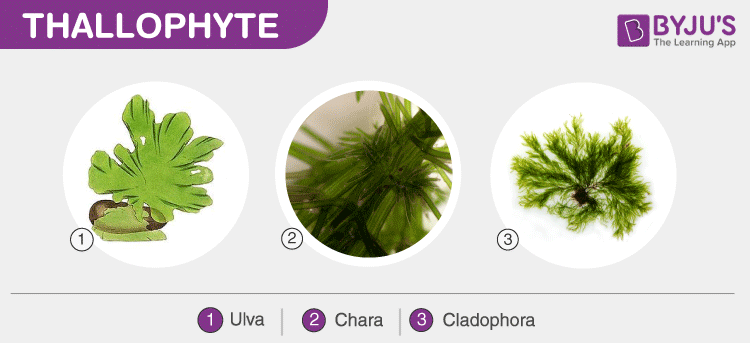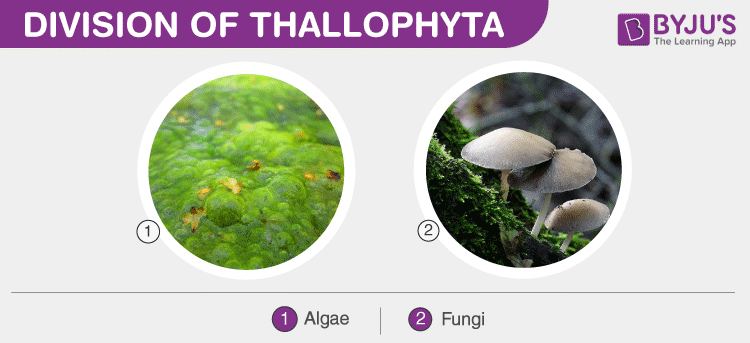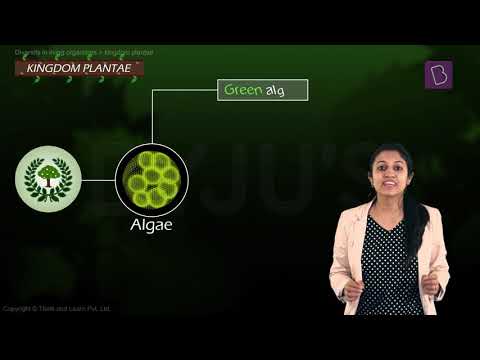Thallophytes are a polyphyletic group of non-mobile organisms that are grouped together on the basis of similarity of characteristics but do not share a common ancestor. They were formerly categorized as a sub-kingdom of kingdom Plantae. These include lichens, algae, fungus, bacteria and slime moulds and bryophytes.

Characteristics of Thallophyta
- They are usually found in moist or wet places.
- This is due to the absence of “true roots” and vascular tissue that is needed to transport water and minerals. Hence they are found in moist or wet places.
- They are autotrophic in nature.
- Most members of this group manufacture their own food. But a few members like fungi are dependent on other sources of food.,
- Reserve food is generally starch.
- After photosynthesis, glucose is produced and consumed almost immediately, the remaining glucose is converted into complex compounds called starch.
- They have a cell wall composed of cellulose around their cells.
- Absence of vascular tissue.
- Unlike other plants, xylem and phloem are absent. etc
- Sex organs are simple, single-celled, there is no embryo formation after fertilization.
Division of Thallophyta
The division Thallophyta is classified into two subdivisions: Algae and Fungi.

Algae
They are chlorophyll-bearing thalloid. They are autotrophic and largely aquatic plants. On a side note, it has been observed that green algae form a symbiotic relationship with sloths that are native to the lush tropical rainforests of South America and Central America. Sloth fur is very coarse and readily absorbs water. As a result, sloth fur forms a moist and damp environment for the algae to flourish. The algae in return provide the sloth with extra nutrition and camouflage from predators. Example: Spirogyra.
Fungi
They are achlorophyllous (meaning: they do not produce chlorophyll) heterotrophic thallophytes. Sometimes, to overcome this handicap, fungi may develop a symbiotic relationship with an alga or a cyanobacterium. The algae can produce food as it has chlorophyll and the fungi in return provide a safe environment that shields the algae from UV rays. Lichen is an example where two organisms act as a single unit.
Stay tuned with BYJU’S to learn more detail about Thallophytes and other groups of organisms.
 \
\
I like it
Thanks ?
best
I would love to learn more from you
Thanks for helping
I love it
I love this
Thanks
Why fungi is included as sub division of thallophyta in plant kingdom if we have already a fungi kingdom
Thallophyta is an abandoned sub-kingdom of kingdom Plantae. This means it is no longer used for classification. When it was in use though, fungi were included as a subdivision.
Thank you for helping us